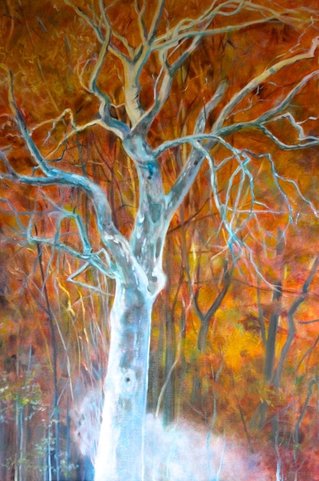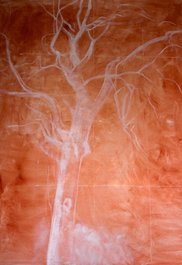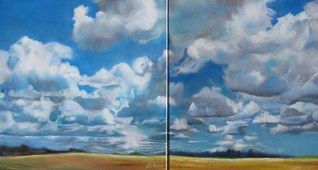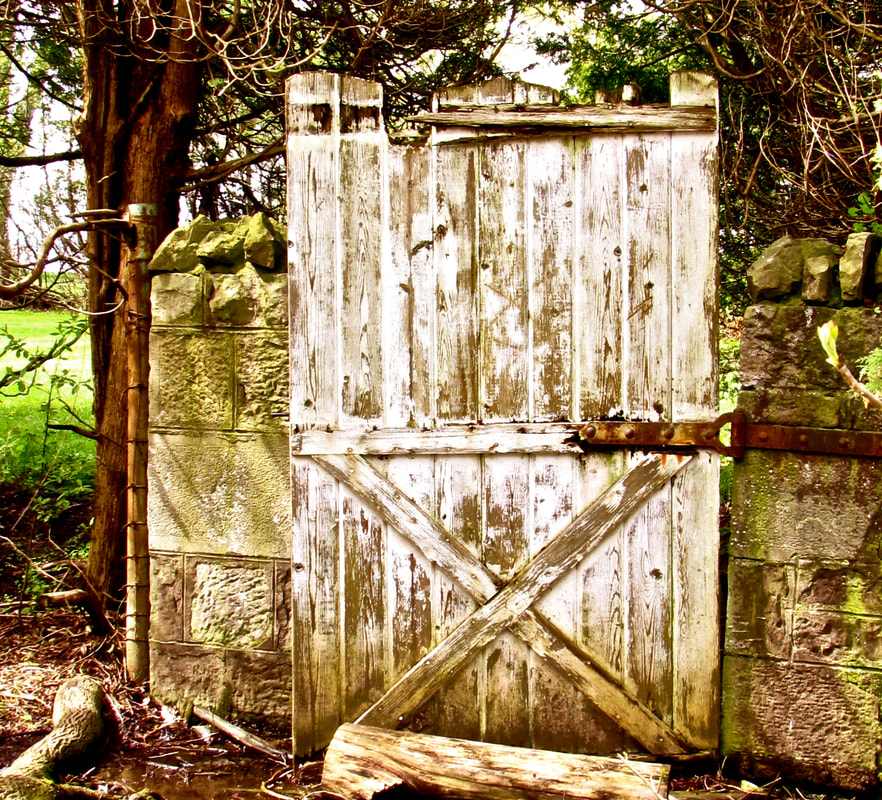At first, the surface is all shine and reflection. That alone was enough reward for me at the beginning. One of the frustrations I had had with watercolour was the loss of glossy colour as the paper dried. Acrylic seemed no better, usually going flat, and it even had the nerve to darken as it dried. But oil — well, hello!! Unfortunately, an oil painting is a perfect devil to try to photograph right away, as there is always some reflection or glistening, no matter in what plane you choose to photograph it. My careening off the buffet in July was a direct result of that problem; out of desperation, I had laid a large painting on the floor in order to photograph it from a minimum of direct (and therefore reflective) light. Having failed spectacularly to descend successfully from my aerie, I am just grateful that I avoided landing on the canvas — remember those Wile E. Coyote runs in mid-air? Well, they work.
The great news is that oil paintings age slowly and with infinite grace. The surface will age into a satin neither matte nor glossy but simply aglow. I have realized that when I attended many a formal dinner dances in university, I was always in peau de soie, which had that same low and lovely sheen-- proving that not only is our aesthetic sense pretty much consistent but, if we are patient, life will burnish our oil paintings into a canvas wrapped in peau de soie. Such happiness.
And that is why I paint in oil. Just one more reason to learn patience. Bonus: I am really unlikely to dribble the main course onto it.








 RSS Feed
RSS Feed
